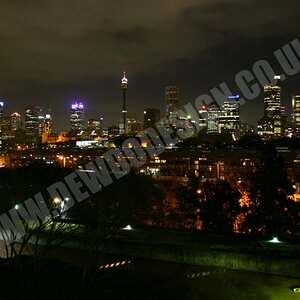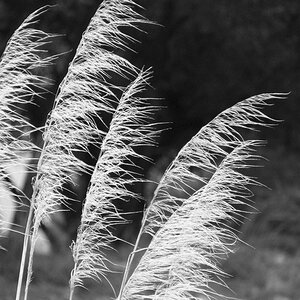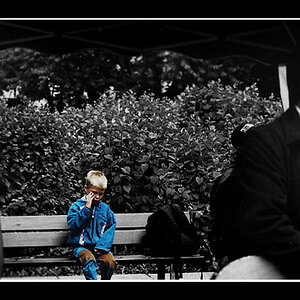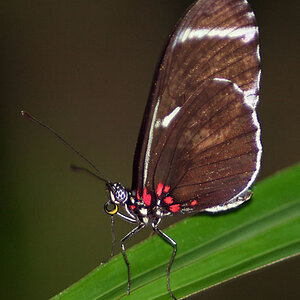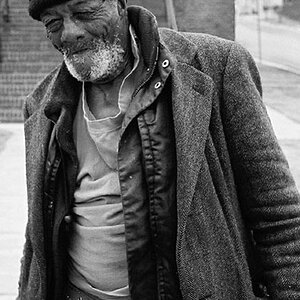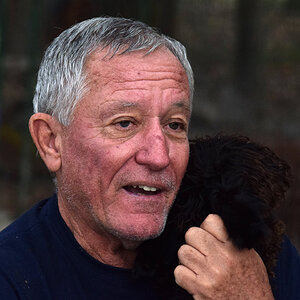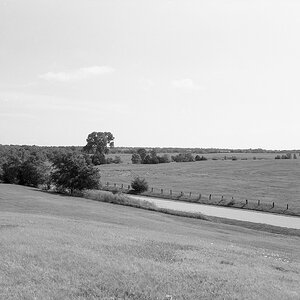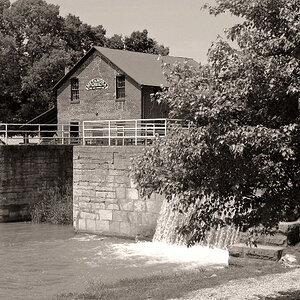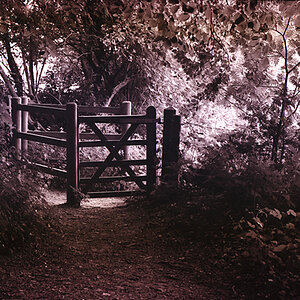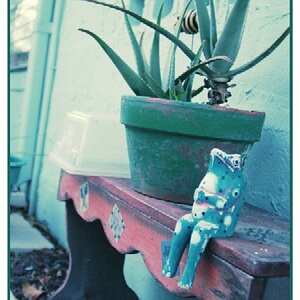Drake
TPF Noob!
- Joined
- Nov 19, 2007
- Messages
- 684
- Reaction score
- 10
- Can others edit my Photos
- Photos NOT OK to edit
Last night I finally got to take my first try at star photography. I live on the outskirts of a small Polish town (population of about 5000), so the light pollution is pretty low. After adjusting my eyes for a couple minutes I could clearly see the milky way stretching across the sky. Here are the results:
1. First shot (actually the second one was first, but this one came out better) - taken with a Canon 1000D and the 18-55mm IS lens, set at 18mm, f/3.5, ISO 800. I shot 3 series of RAW photos:
Here's the final result:

Full resolution image
One of the original light frames, converted to JPG with default LR settings
2. Second shot - taken with Canon 1000D and Helios 58mm f/2 lens at f/2, ISO 800. I must admit I did not nail the focus with this one, or I had some problems with stability, can't really tell which one. As before, 3 series:

Full resolution image
One of the original light frames, converted to JPG with default LR settings
Since it was my first try, I guess it's not very bad, but I must admit I am not entirely happy with the results. I like the luminosity of the photo, the milky way can be seen pretty easily. But the photo is monochrome, and therefore pretty boring. The milky way doesn't have the bluish/purplish hue it does on photos shot by professionals. But it looks exactly the way it looked to a naked eye. So here's my question - what went wrong? Should there be more frames in each series? Is it a matter of settings in DeepSkyStacker? Could it be the minimal star trailing? Or was there just too much light pollution? The sky was very dark, but I guess it could be a little bit darker away from the town.
1. First shot (actually the second one was first, but this one came out better) - taken with a Canon 1000D and the 18-55mm IS lens, set at 18mm, f/3.5, ISO 800. I shot 3 series of RAW photos:
- light frames - 15 shots, 30 seconds each
- dark frames - 10 shots, 30 seconds each, lens cap on
- flat frames - 10 shots, 1/4000 second each, lens cap on
Here's the final result:

Full resolution image
One of the original light frames, converted to JPG with default LR settings
2. Second shot - taken with Canon 1000D and Helios 58mm f/2 lens at f/2, ISO 800. I must admit I did not nail the focus with this one, or I had some problems with stability, can't really tell which one. As before, 3 series:
- light frames - 10 shots, 13 seconds each
- dark frames - 10 shots, 13 seconds each, lens cap on
- flat frames - 10 shots, 1/4000 second each, lens cap on

Full resolution image
One of the original light frames, converted to JPG with default LR settings
Since it was my first try, I guess it's not very bad, but I must admit I am not entirely happy with the results. I like the luminosity of the photo, the milky way can be seen pretty easily. But the photo is monochrome, and therefore pretty boring. The milky way doesn't have the bluish/purplish hue it does on photos shot by professionals. But it looks exactly the way it looked to a naked eye. So here's my question - what went wrong? Should there be more frames in each series? Is it a matter of settings in DeepSkyStacker? Could it be the minimal star trailing? Or was there just too much light pollution? The sky was very dark, but I guess it could be a little bit darker away from the town.



